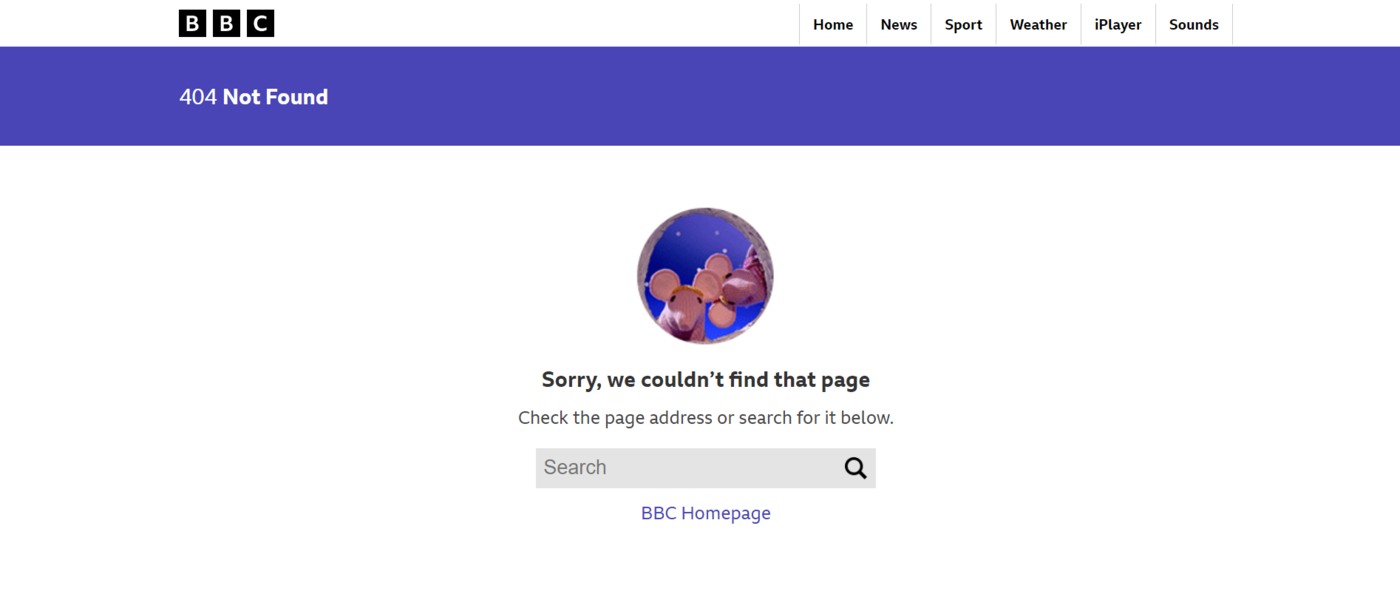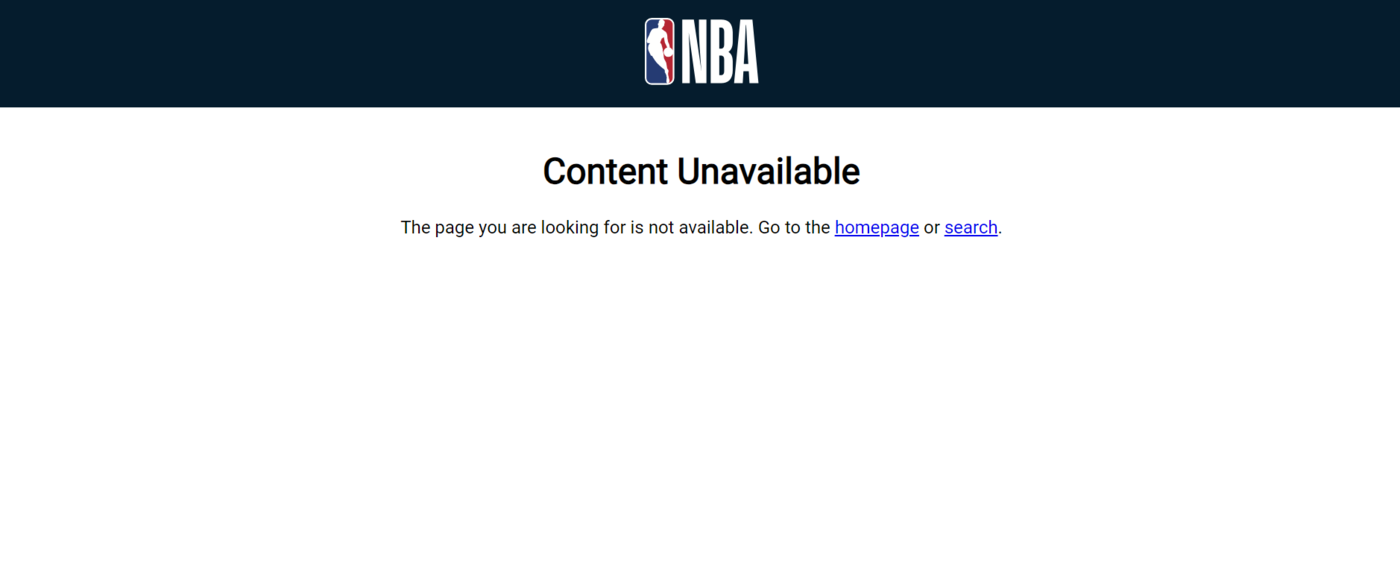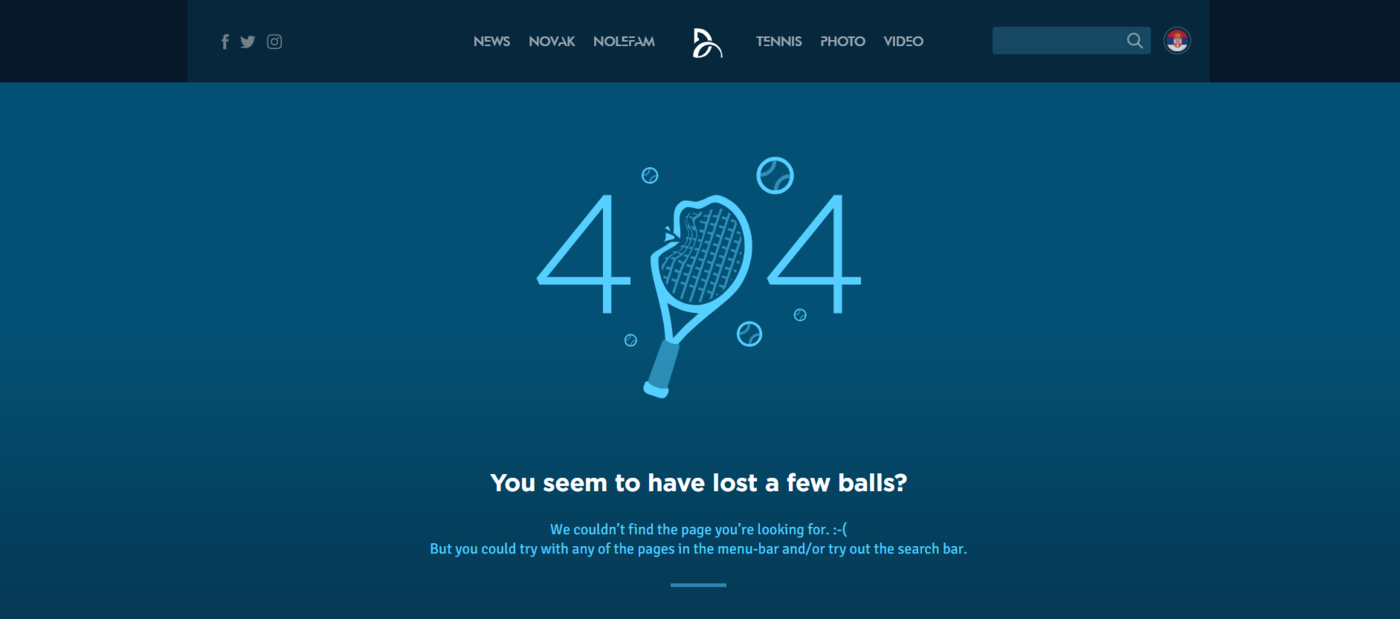What is 404 Not Found?
The HTTP 404 Not Found status code indicates that the server cannot find the requested resource or webpage. This typically occurs when:
- The content does not exist
- The content has been moved to a new URL
- The content has been deleted from the web
- The server cannot locate the content
Sometimes, a server may return a 404 error if it doesn’t want to reveal that a webpage exists. This could happen if you do not have sufficient authorization to access the webpage. In this case, you should look into your authentication and permissions if you are certain the webpage exists.
The 404 Not Found error belongs to the 4xx series of HTTP status codes.
4indicates a client errorxxis a placeholder for two numbers that provide more information about the status of the HTTP request
Examples of 404 Error Pages
404 Not Found pages are customizable, so their appearance differs from site to site.
Sometimes, the 404 page includes words like “404,” “Error 404,” or “404 Not Found,” along with some text informing you that the page you are looking for does not exist or cannot be found.

Some sites may only inform you that the page is missing, unavailable, or cannot be found and do not mention 404, Not Found, or Error.

It is quite common for bloggers to include some form of humor on their 404 pages.
For example, the 404 page of the site belonging to the famous footballer Lionel Messi jokes about his dog, Hulk, eating the page.

Many sites also customize their 404 pages to match the type of content they publish.
For example, tennis star Novak Djokovic jokes about visitors losing tennis balls on his 404 page. The page also includes illustrations of some tennis balls and a tennis racket in place of the zero in 404.

As you can see, there is no one-size-fits-all approach to 404 pages. Individual websites will typically create 404 pages to suit their taste and audience.
Hard 404 vs Soft 404 errors
If you have run a site for a while, you may have encountered the term “soft 404.”
A soft 404 occurs when a site returns a status code other than a 404 Not Found. This differs from the hard 404 error, which always returns a 404 Not Found status code.
Typically, when you try to access a webpage:
- Your browser sends an HTTP request to the server, requesting access to the resource located at the URL
- If the resource is unavailable, the server returns an HTTP 404 status code, informing your browser that the webpage is unavailable
- Your browser then shows you a 404 page
In the case of the soft 404, the server will return a 200 OK status code, indicating the webpage is available.
However, the visitor will encounter a 404 page, indicating that the page is not available. Sometimes, the site may display its homepage instead of a 404 page.
Search engines treat soft 404 error pages similar to hard 404 pages. However, soft 404 error pages confuse visitors and search engines, especially when they return an actual page instead of a 404 page.
Soft 404 pages are bad for SEO. For one, they could cause duplicate content issues as the search engine would crawl the same content under multiple URLs.
This could cause the search engine to use up the site’s crawl budget on URLs that should not exist. Once the crawl budget is exhausted, the search engine may be unable to crawl other URLs containing helpful content.
Consequences of 404 Errors
404 pages can have usability and SEO consequences for your site. We will now go through some of them below.
1 Leads to Poor User Experience
Visitors typically expect to find a page on URLs where they encounter 404 errors. So, when they encounter a 404 page, they can quickly become frustrated and leave your site altogether.
While visitors expect occasional 404 errors, repeated 404 errors indicate that you are not maintaining your site well enough. This causes visitors to consider you unprofessional and unreliable, leading to decreased trust in your site.
2 Leaves Your Pages Unindexed
Search engines have a limited crawl budget for your site. Frequent 404 pages, particularly soft 404 pages, can use up this budget, leading search engines to crawl unimportant pages you do not want in search results.
Once your crawl budget is exhausted, search engines may be unable to crawl and index the important pages you want in search results.
3 Causes Search Engines to Deindex Your URL
Google typically deindexes previously indexed pages that return a 404 Not Found error. While Google will not deindex your site the moment it encounters a 404 error, it will crawl the URL a few more times to check if the content has returned.
Google will deindex the URL after a few crawls. At the same time, it will reduce the rate at which it crawls the URL and will stop after a significant period of time.
4 Causes You to Lose Link Equity
Sites typically pass link equity when they link back to you. These backlinks help to improve your site’s authority and credibility in the eyes of search engines.
However, a site cannot pass link equity if the link leads to a 404 page on your site. In this case, you will lose out on the link equity you should have received from that link.
5 Makes You Lose Out on Revenue
Visitors may leave your site when they encounter 404 errors. Or they may navigate to some other content on your site other than the one they initially planned.
This may cause visitors to leave your site without completing some initial action, such as making a purchase or filling out a form. Depending on the intent, this could cause you to lose out on leads and sales.
How to Fix 404 Not Found Errors
Not all 404 errors should be fixed. So, before deciding on the best method of fixing a 404 error, you should first decide whether the error needs fixing.
Typically, you want to fix 404 pages that receive considerable traffic and 404 pages with links pointing to them from other pages.
1 Correct the URL
The easiest way to rectify a 404 page is to replace the wrong link with the correct one. However, this is easier when the link is on your site or a platform under your control.
It will be difficult or impossible to replace links on another site or links sent through mediums like emails, which typically cannot be edited.
2 Redirect the URL
When you move content from a URL or in situations where you cannot change the URL, it is a great idea to redirect the URL to actual content.
In this case, you should consider using 301 redirects if the redirection is permanent and 302 redirects if it is temporary.
3 Include Content to the URL
If the 404 page previously contained content, then you could restore the content to the URL. In cases where the URL never contained any content, you could create relevant content and publish it to the URL.
In both cases, visitors will be able to access content when they visit the URL rather than encountering a 404 Not Found page.